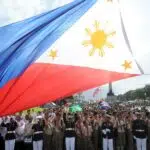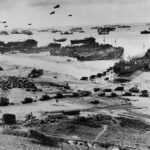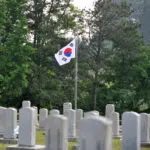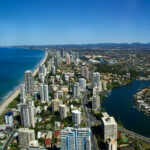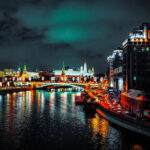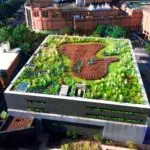Linggo ng Kalayaan is observed every year in the Philippines from June 6 to 12 — following the Proclamation No. 194 signed on June 1, 1992, by Former President Corazon C. Aquino. A week leading to the celebration of Independence Day, Filipinos celebrate Linggo ng Kalayaan as a way to strengthen their sense of nationalism and as a reminder of the value of freedom and democracy. Everyone is encouraged to have a sense of pride in their heritage as a Filipino. So, celebrate as proud Filipinos before the country’s “Day of Freedom” at the end of the celebratory week.
History of Linggo ng Kalayaan
Linggo ng Kalayaan, or Independence Week, is a week-long celebration before the Philippines Independence Day. On June 1, 1992, Former President Corazon C. Aquino signed Proclamation No. 914, declaring the period of June 6 to 12 of every year as “Linggo ng Kalayaan.” At the time, she thought that there was a constant need to strengthen nationalism and instill the value of freedom and democracy in the consciousness, as well as in the activities, of every Filipino. All sectors of society and government are encouraged to work together in pursuing projects and campaigns geared toward inspiring nationalism among Filipinos.
The Republic of the Philippines declared its independence from Spain on June 12, 1898. The Philippines had been part of the Spanish Empire since the mid-16th century. In 1896, a secret society called Katipunan led by Andrés Bonifacio was discovered. It led to the beginning of the struggle for independence. On December 14, 1897, a truce between the Spanish colonial government and the Filipino revolutionaries was established. The independence of the Philippines was later officially recognized by the United States on July 4, 1946.
Before 1964, June 12 was observed as Flag Day in the Philippines. In 1965, Flag Day was moved to May 28, and in 1994, the celebration period was extended, starting from May 28 to the Philippines Independence Day on June 12. Government departments, offices, institutions, and private establishments are asked to display the national flag of the Philippines. Linggo ng Kalayaan is celebrated within the flag days so that people will be encouraged to celebrate the week proudly as the national flags are visible in almost all places.
Linggo ng Kalayaan timeline
A truce between the Spanish colonial government and the Filipino revolutionaries is established.
The Republic of the Philippines declares its independence from Spain.
The independence of the Philippines is officially recognized by the United States.
President Corazon C. Aquino signs Proclamation No. 914, declaring the period of June 6 to 12 of every year as “Linggo ng Kalayaan.”
Linggo ng Kalayaan FAQs
Who is the national hero of the Philippines?
Although reformist writer Jose Rizal is widely considered the greatest Filipino hero, there is actually no national hero officially proclaimed by the Philippine government.
Who named the Philippines?
The Philippines was named after King Philip II of Spain.
Did Japan colonize the Philippines?
Japan occupied the Philippines for more than three years until they surrendered to the Allies.
How to Observe Linggo ng Kalayaan
Learn history
Learning about your country’s history is the first step toward nationalism. You can learn about your predecessors who fought for the freedom of the Philippines. Now, your job is to maintain your country’s sovereignty with whatever you do.
Display the national flag
Displaying a national flag is a simple gesture of being proud of one’s nation. So, display the national flag in front of your homes to show that you are a proud Filipino.
Gather with family and friends
You have one week to celebrate Linggo ng Kalayaan. Spend a day or two gathering with your family and friends to share the joy of freedom.
5 Interesting Facts About The Republic Of The Philippines
Monkey-eating eagle is its national bird
The Philippine eagle, also known as the monkey-eating eagle, is the national bird of the Republic of the Philippines.
It’s home to Asia’s first basketball league
Philippine Basketball Association (P.B.A.) is Asia’s first professional basketball league, and it is the second oldest in the world after the N.B.A.
It’s the largest supplier of nurses
Many citizens, especially those in the field of nursing and similar professions, seek jobs abroad due to the limited job opportunities in the country.
It houses the oldest Chinatown
Binondo in Manila is recognized as the world’s oldest Chinatown established in 1594.
It’s the text capital of the world
The Philippines earned its nickname as the text capital of the world due to the large volume of text messages sent throughout the country.
Why Linggo ng Kalayaan is Important
It is a great reminder
Linggo ng Kalayaan is celebrated for a week until the Philippines Independence Day. It serves as a reminder for Filipinos to value the freedom they are enjoying today.
It is a moment to be proud
Former President Corazon C. Aquino initiated Linggo ng Kalayaan to encourage everyone to have a sense of pride in their heritage as Filipinos. We must be proud of our nation, which independence was attained through the struggle of our predecessors.
It is a call to maintain freedom
Freedom is a right. Linggo ng Kalayaan allows us to continue working on maintaining the freedom that we have been handed to us by our courageous revolutionaries.
Linggo ng Kalayaan dates
| Year | Date | Day |
|---|---|---|
| 2026 | June 6–12 | Saturday–Friday |
| 2027 | June 6–12 | Sunday–Saturday |
| 2028 | June 6–12 | Tuesday–Monday |
| 2029 | June 6–12 | Wednesday–Tuesday |
| 2030 | June 6–12 | Thursday–Wednesday |



